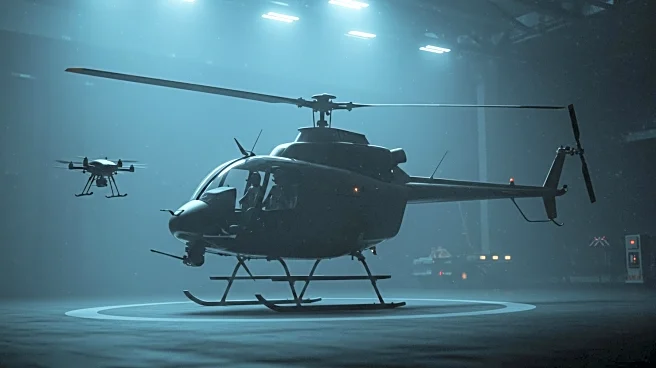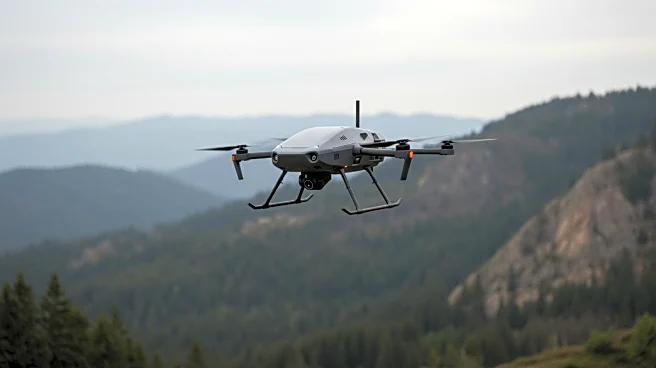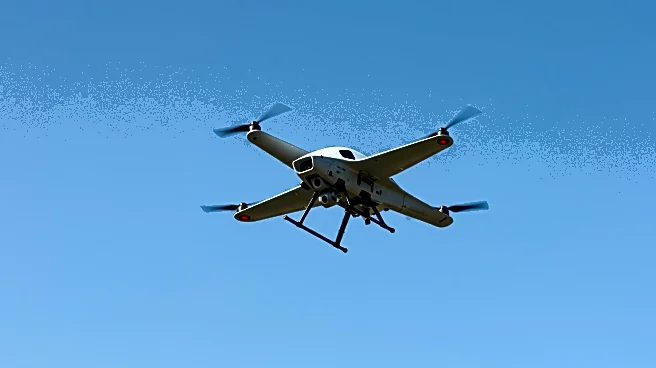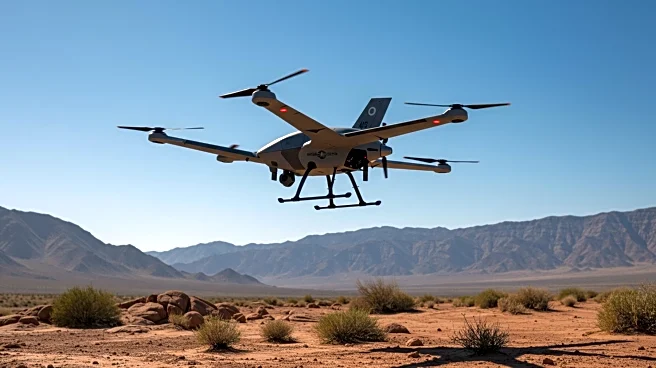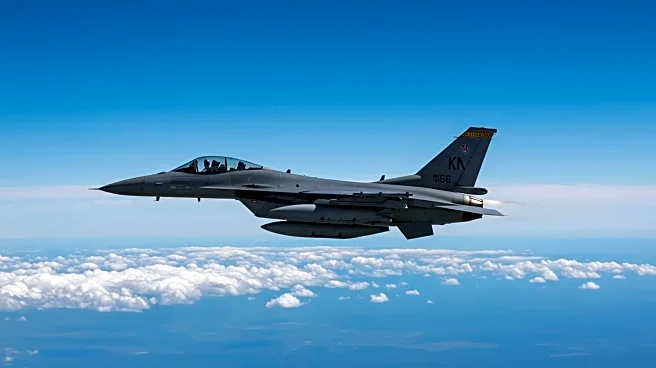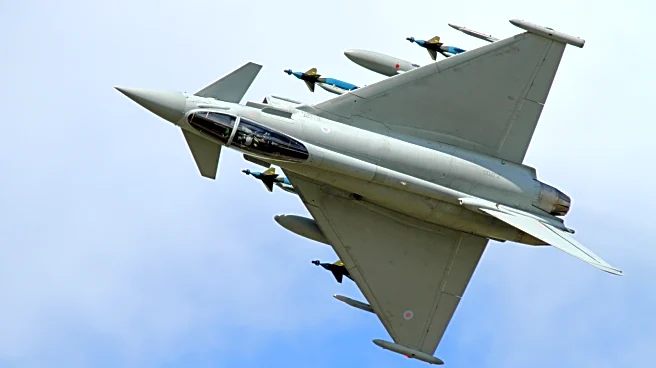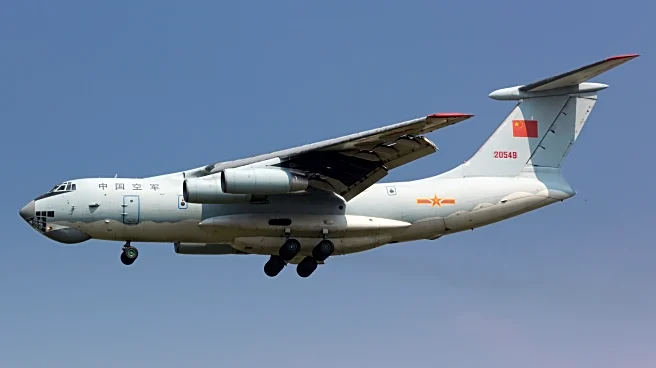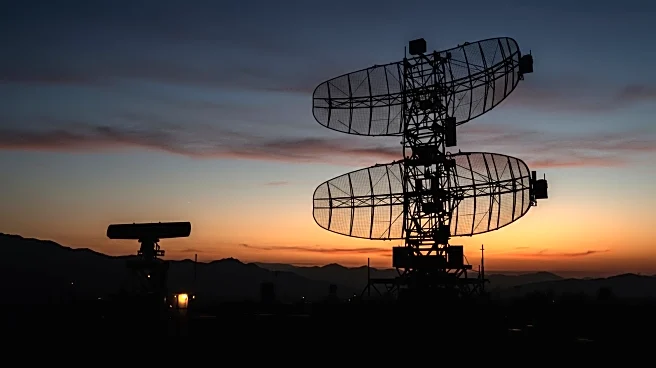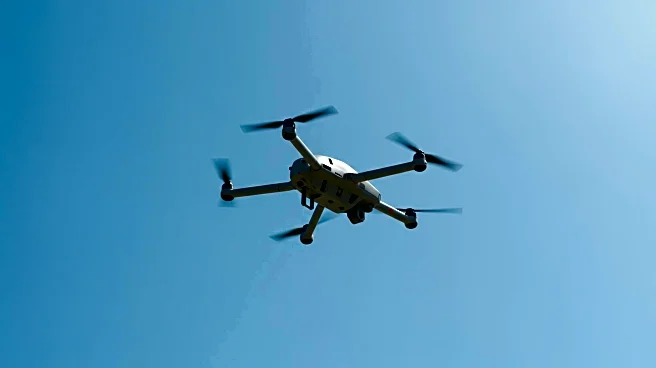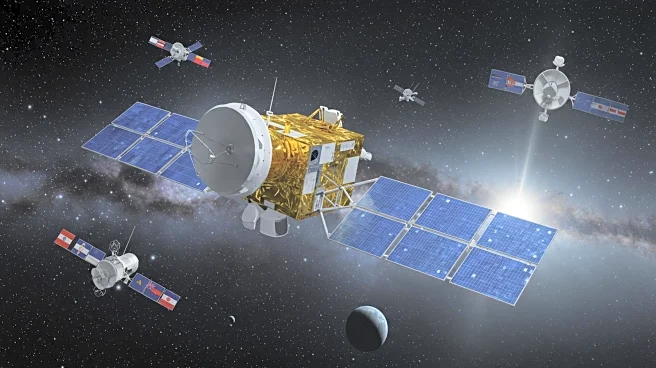What's Happening?
Sikorsky has been awarded a $43 million contract by the US Army to modernize its UH-60 Black Hawk helicopters. The contract, dated August 20, focuses on enhancing the UH-60M utility helicopter airframes with digital backbone capabilities to support the integration of unmanned aerial systems (UAS). This modernization aims to enable the Black Hawks to deploy 'launched effects' drones, which are integral to the Army's modernization plans. These drones are expected to provide reconnaissance, electronic warfare, and kinetic strike capabilities. Hamid Salim, Sikorsky's vice-president of army and air force systems, emphasized that these enhancements will offer significant advantages in potential conflict zones like the Indo-Pacific region.
Why It's Important?
The integration of UAS into Black Hawk helicopters represents a significant advancement in military technology, potentially transforming battlefield operations. This modernization could enhance the Army's reconnaissance and combat capabilities, allowing for more strategic deployment in contested environments. The ability to deploy drones from helicopters could keep troops and aircraft at safer distances from enemy defenses, thus improving survivability. The initiative aligns with broader military modernization efforts, aiming to reduce costs and increase efficiency while enhancing operational capabilities.
What's Next?
Sikorsky plans to deliver the upgraded Black Hawk capabilities by 2026. The enhancements include airframe improvements, a main fuel upgrade, and future updates to flight controls, possibly incorporating autonomy and AI features. However, the Army's cost-cutting measures have cast uncertainty on some modernization projects, including the propulsion upgrade with the GE Aerospace T901 Improved Turbine Engine. There is potential for congressional intervention to preserve the Black Hawk re-engine program in the fiscal year 2026 defense budget.
Beyond the Headlines
The modernization of Black Hawks with UAS capabilities could have long-term implications for military strategy and technology development. It may influence future aircraft design and operational tactics, emphasizing the role of drones in modern warfare. Additionally, the integration of AI and autonomy features could set a precedent for future military equipment, potentially reshaping pilot training and mission planning.
